Ecuador and the Galapagos – Day 3 can be found here.
I woke in the middle of the night to the sound of rain pounding upon our thatched roof.
All I can remember thinking is, “I hope they don’t wake us before 6 am.”
Well, we got our wish.
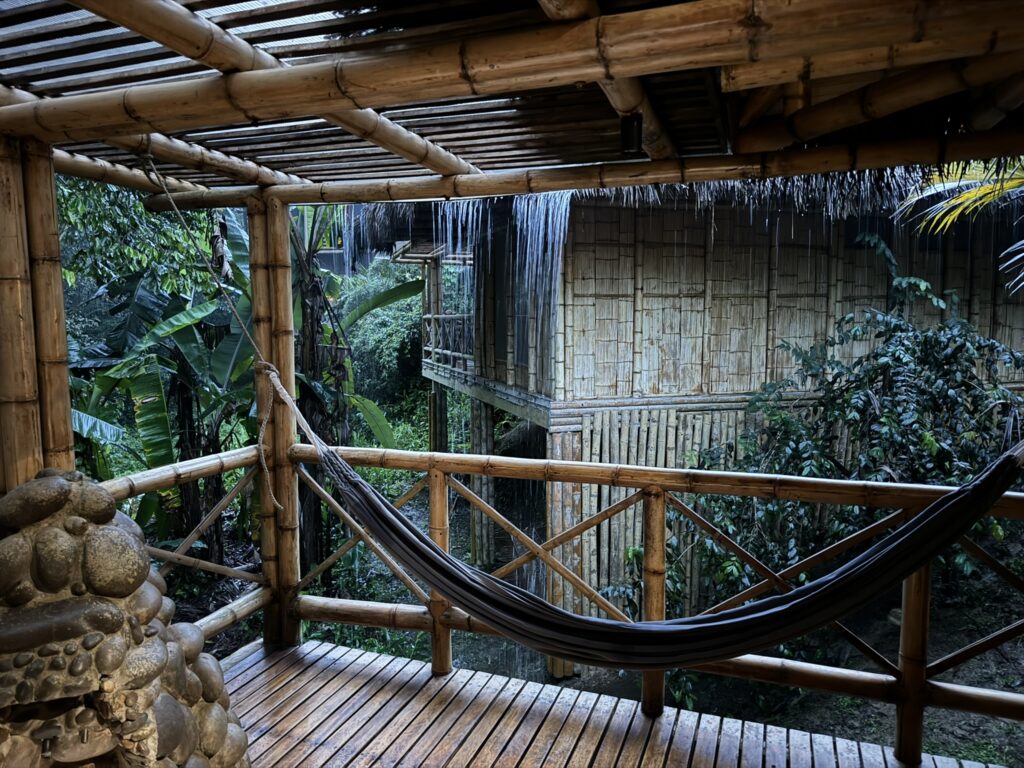
Rain? In the rainforest?
I could grump about missing some of our morning excursion, but there’s also something incredible about being in the Amazon in the middle of a pounding rainstorm. So we decided to embrace our relaxed morning and wait for the storm to clear.
Meanwhile, there was a spectacular breakfast buffet to enjoy:
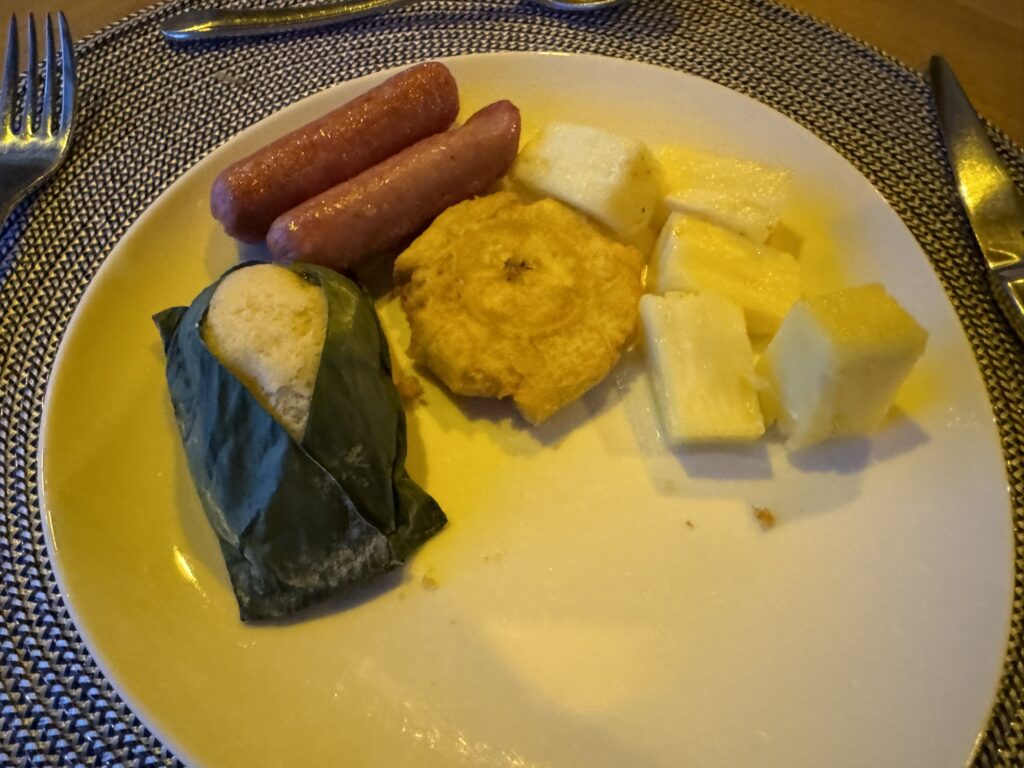

Midway through breakfast, our guide – Ana – updated us on the plan: storm should pass at 10 am, and we’d meet at around 9:30 or so to learn a little bit more about the region and pick out the boots we’d need for the day’s excursions.
We then hung out at the restaurant and played a bit of Dungeons and Dragons as we watched the storm go by:
Before we knew it, it was time to meet up for our briefing.
We learned some fascinating facts about the Amazon river basin, such as the countries that it extends into – Ecaudor, Peru, Colombia, Brazil, Venezuela, Bolivia, Guyana, and French Guyana and Suriname. It’s the largest volume river in the world, but not the longest – that honour goes to the Nile. For all of you who play Silversea trivia – you’re welcome.
The section of the Amazon closest to the Andes is also the most diverse, which makes sense when you consider the extent of the elevation change. This particular hotel is close to Yasuni National Park, which has more than 2.4 million acres and includes 204 mammal species, 610 birds species 121 reptile species, 155 amphibian species, and 268 fish species. It also has an uncontacted tribe.
Today’s excursion would involve a hike to the nearby 120 ft high observation tower, followed by an extended hike back to the resort. In the evening we would go for a hike to a nearby lagoon for another canoe paddle, and then enjoy a night hike on the way back. (Initially the observation tower and the lagoon were both scheduled for the morning.)
We saw some pretty spectacular scenery on the way to the observation tower:
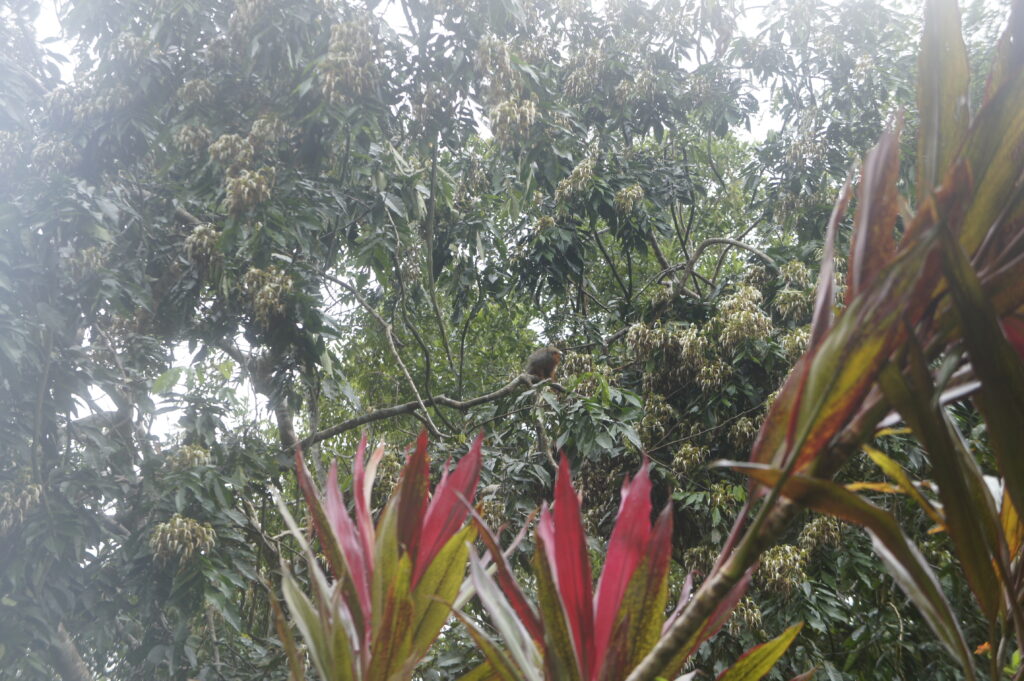
Titis in the mist – mostly because my lens fogged up
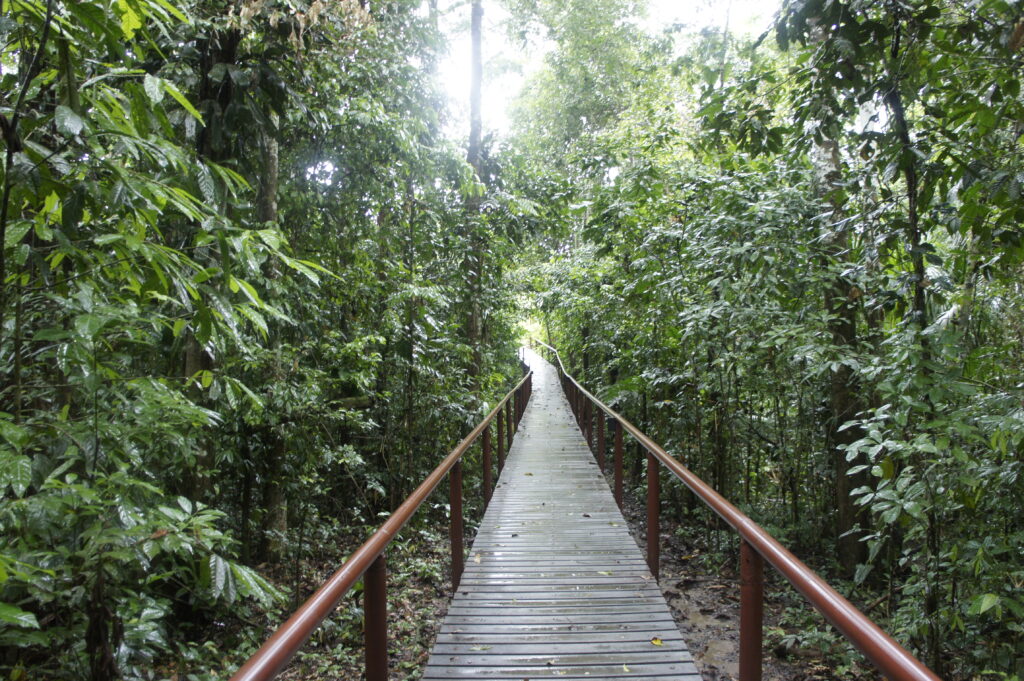
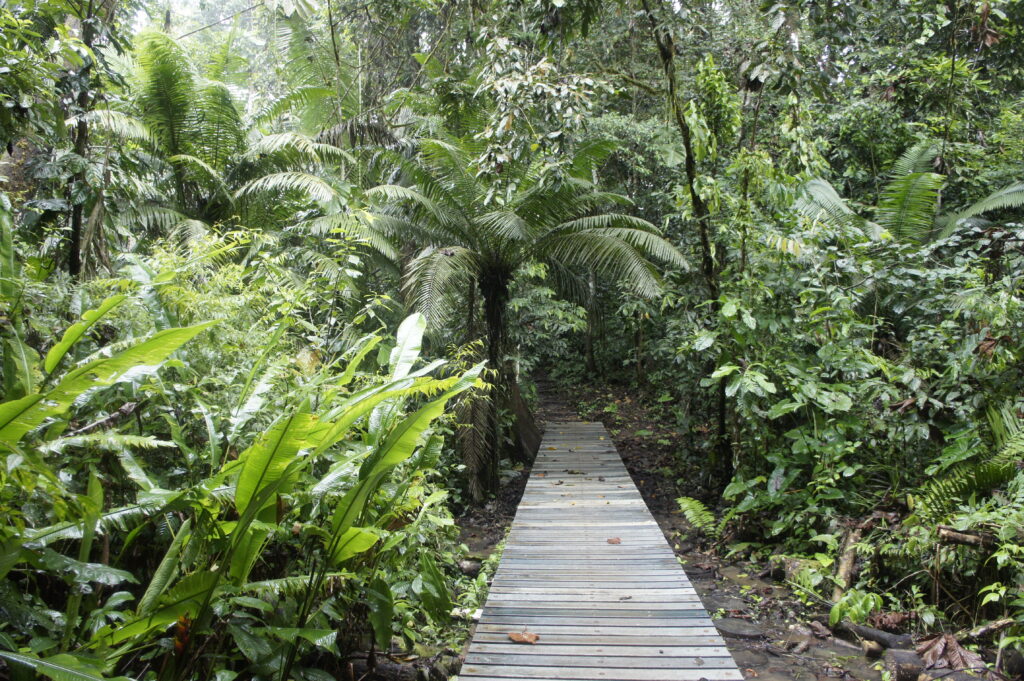
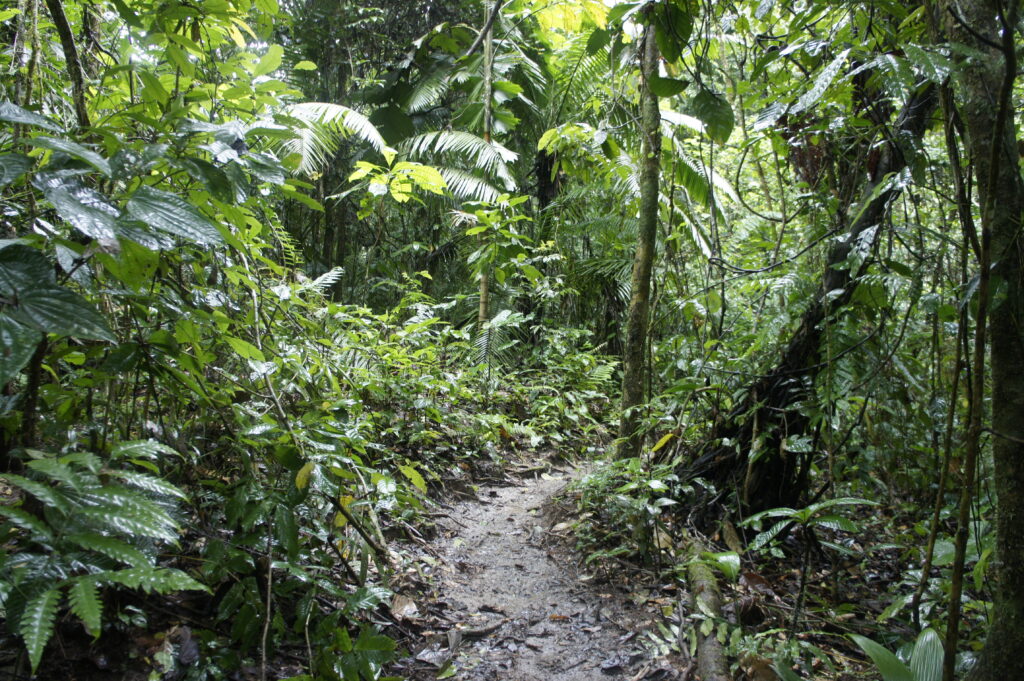
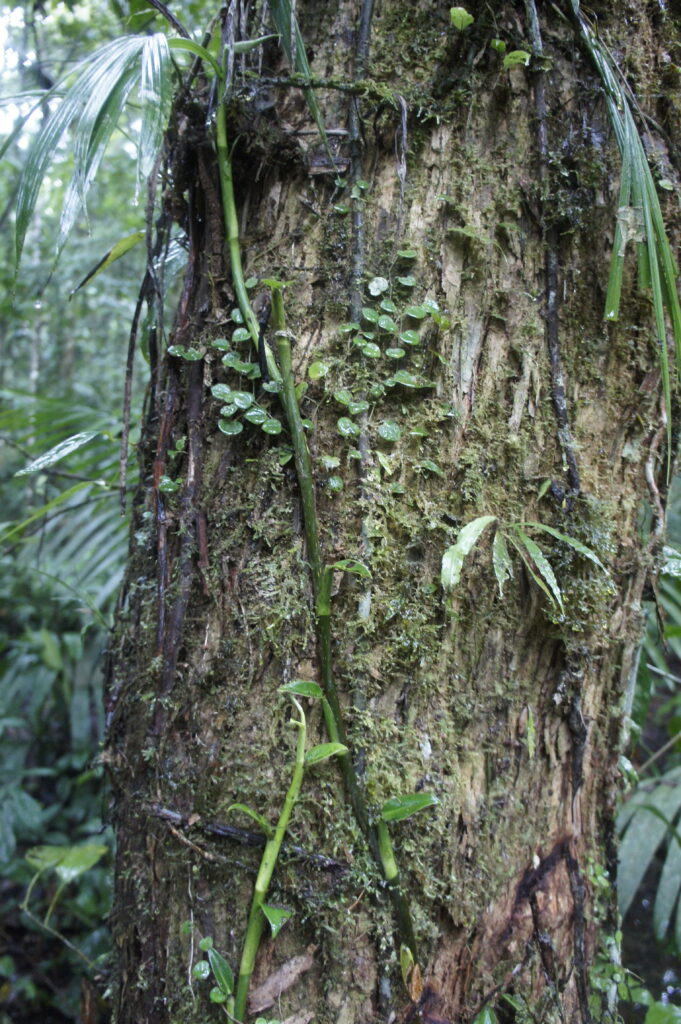
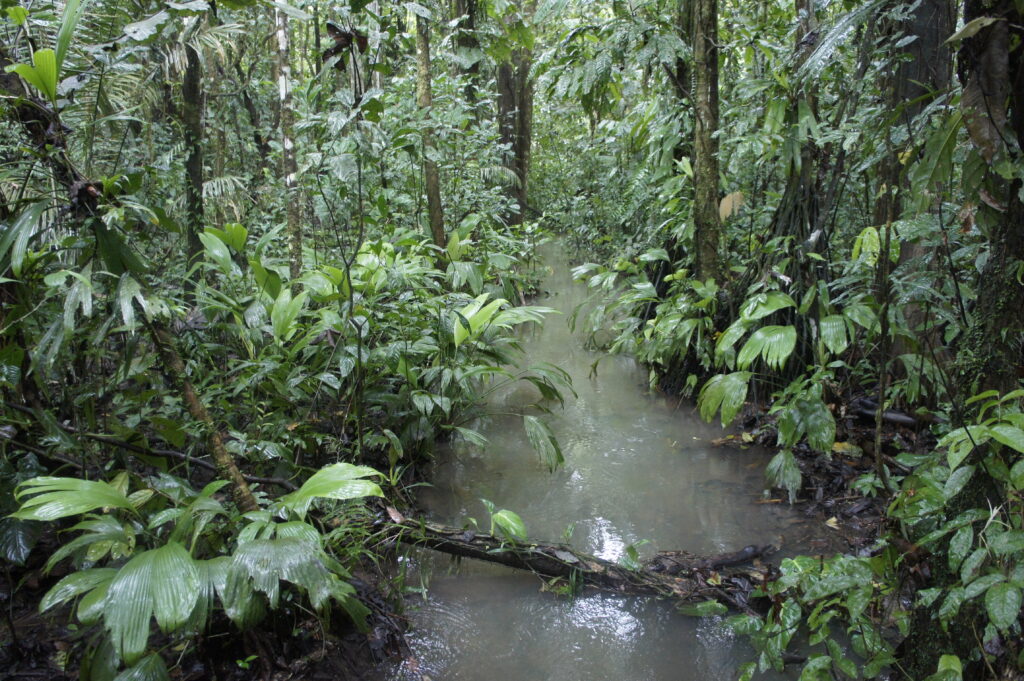
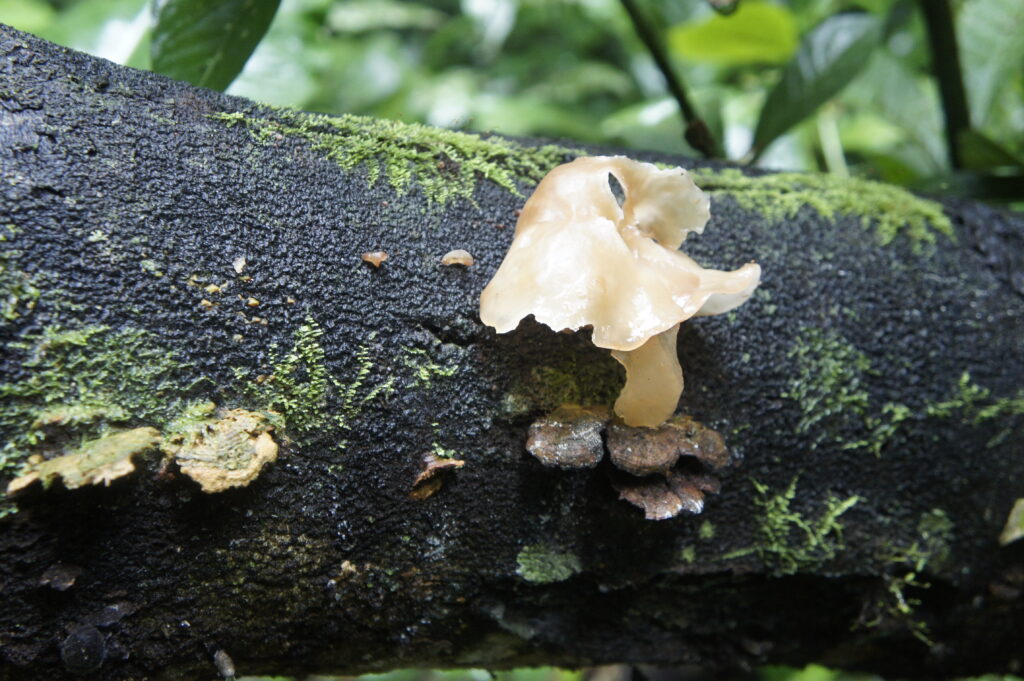
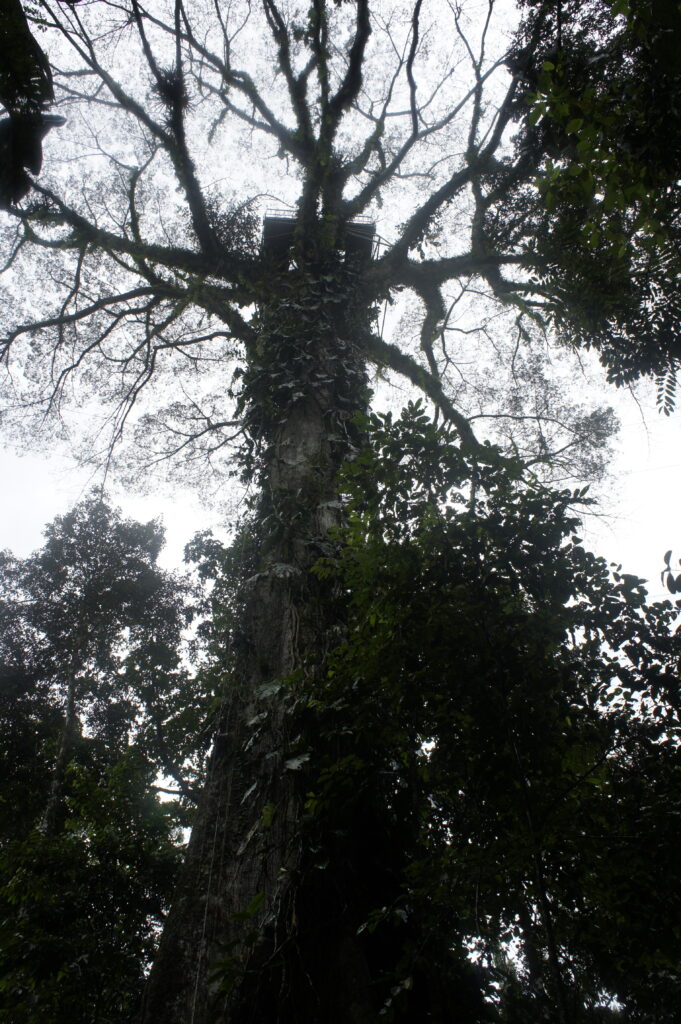
The Kapok tree can grow to be over 800 years old – this one is practically a teenager at a mere 250 years
Not to mention the view and wildlife from the tower itself:
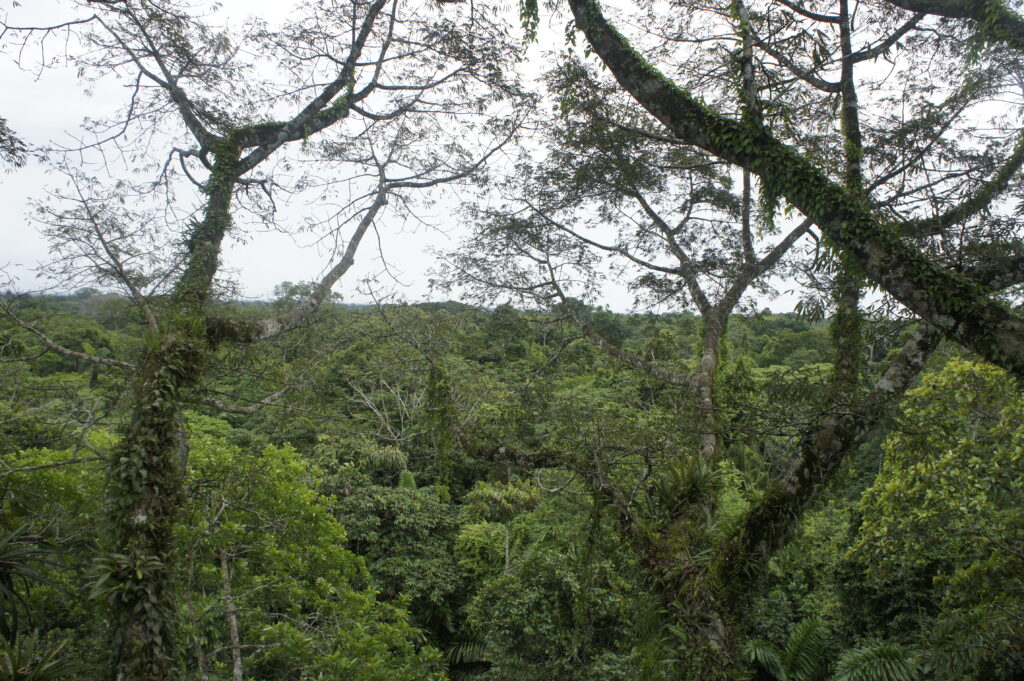
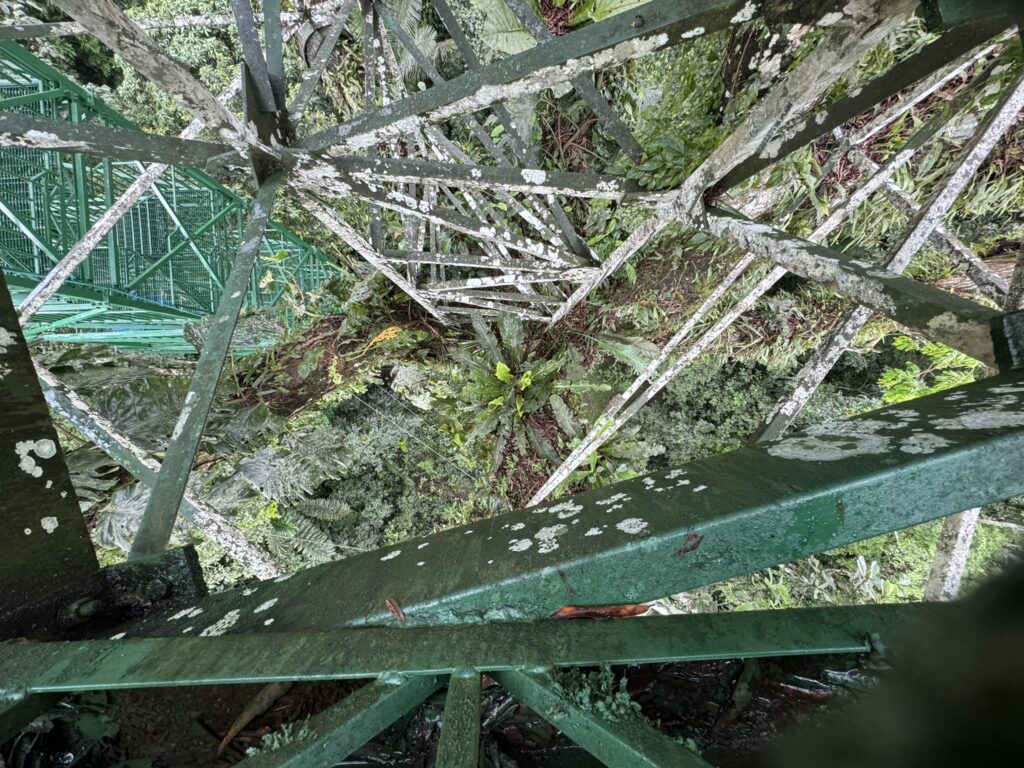
So much for looking down…
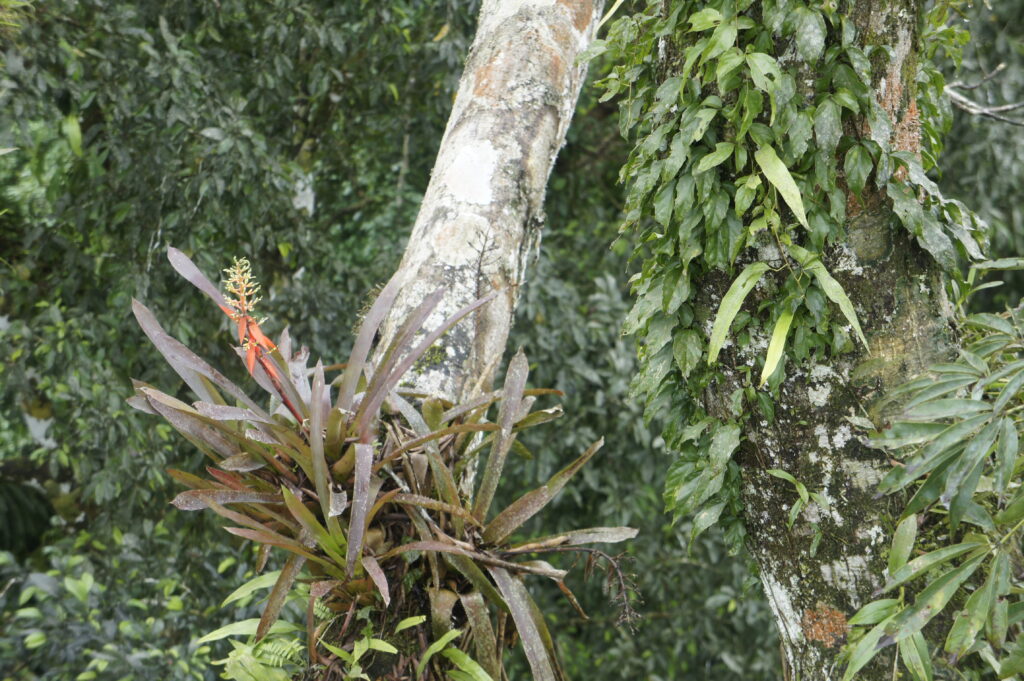
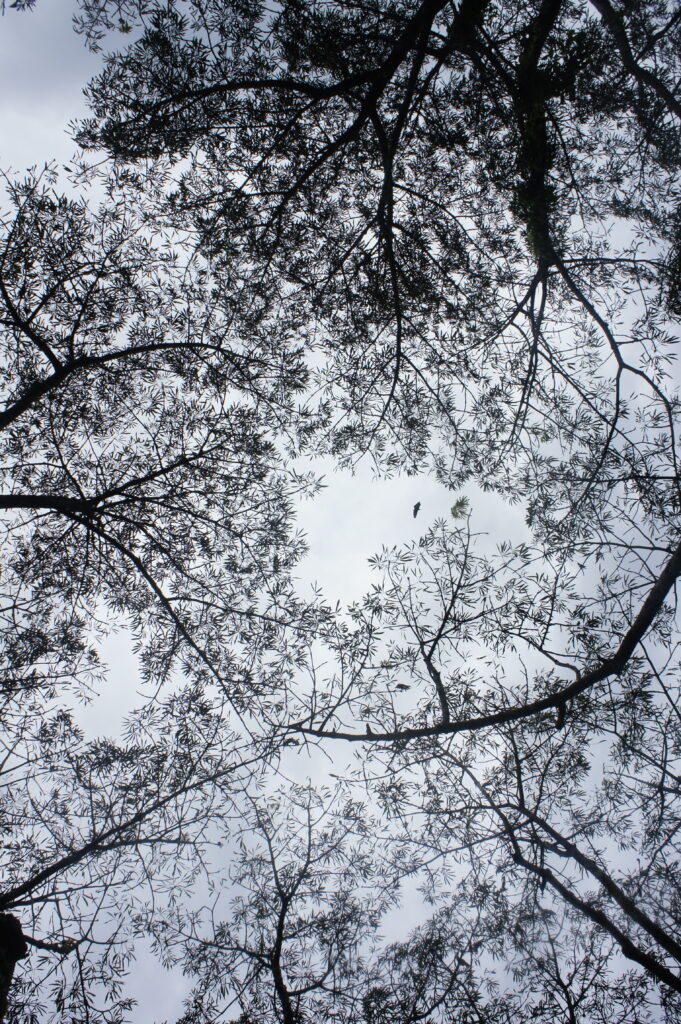
We didn’t manage to capture much on camera, but we did spot two different species of macaws (blue and yellow and scarlet), howler monkeys, parakeets, parrots, toucans, and much more.
It was also fascinating to see the manner in which life grows atop itself in the Amazon – soil building up on the branches, which themselves are the size of tree trunks, and which are home to a host of life including ferns and even entirely new trees, which will send its roots down into the soil below (a.k.a. the source of the Tarazan-type vines).
We were up there for an hour, at which point we returned to the forest and took a second, longer route back to the resort – where we saw some beautiful scenery:
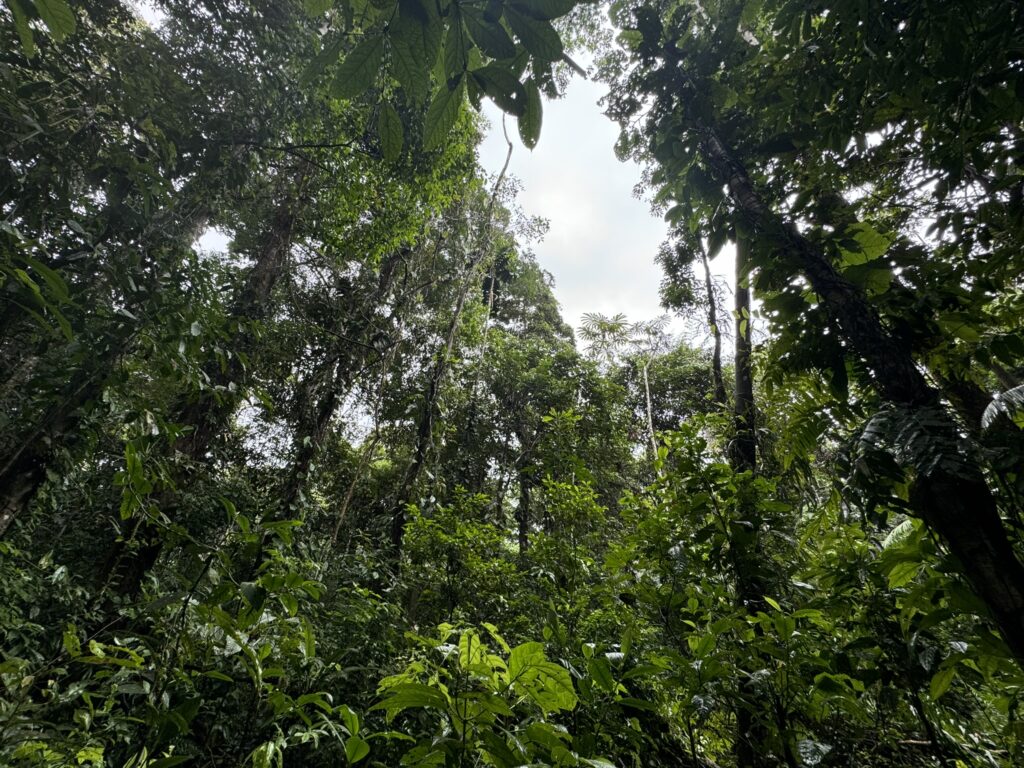
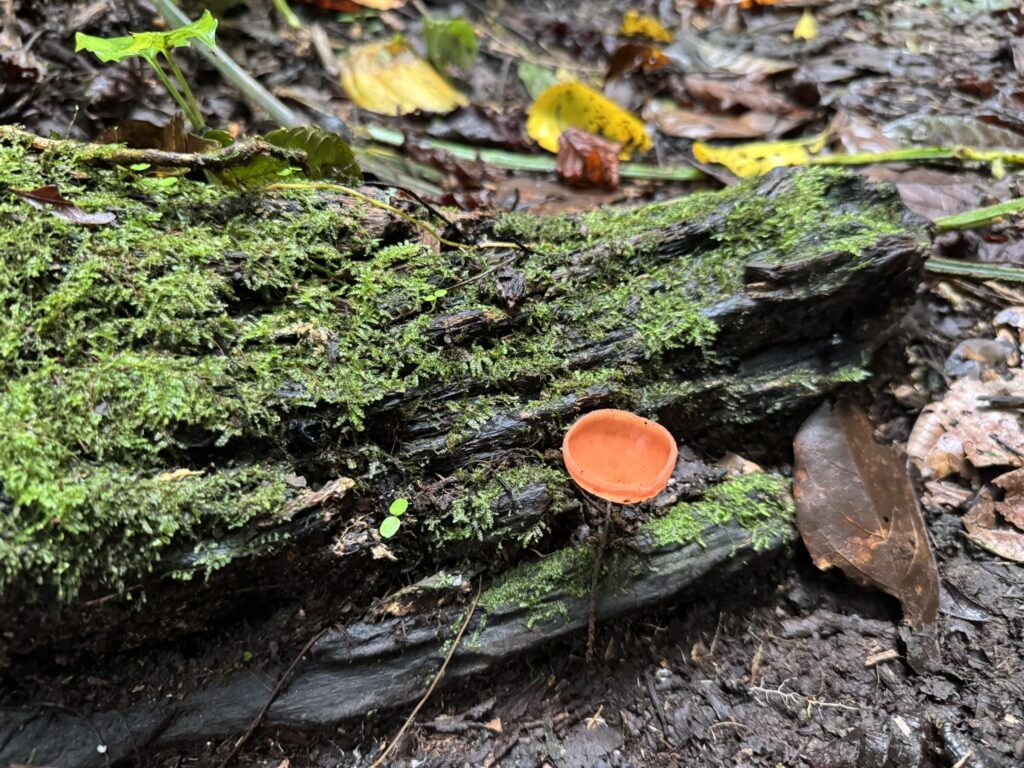
And a poison dart frog, which promptly played dead.
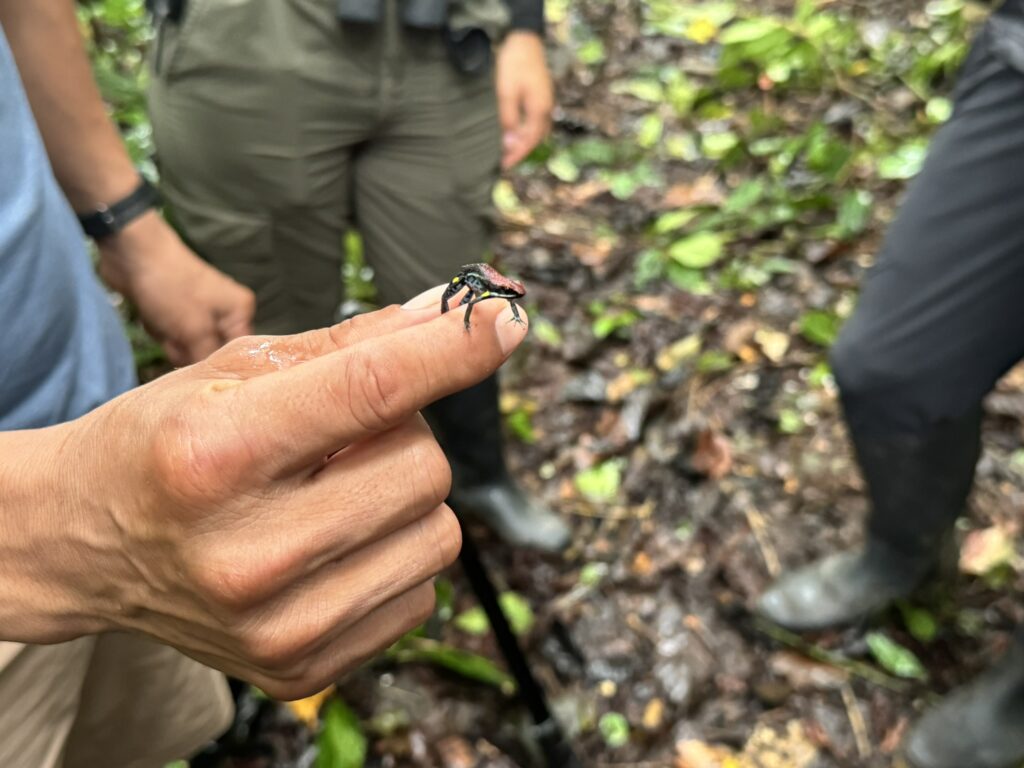
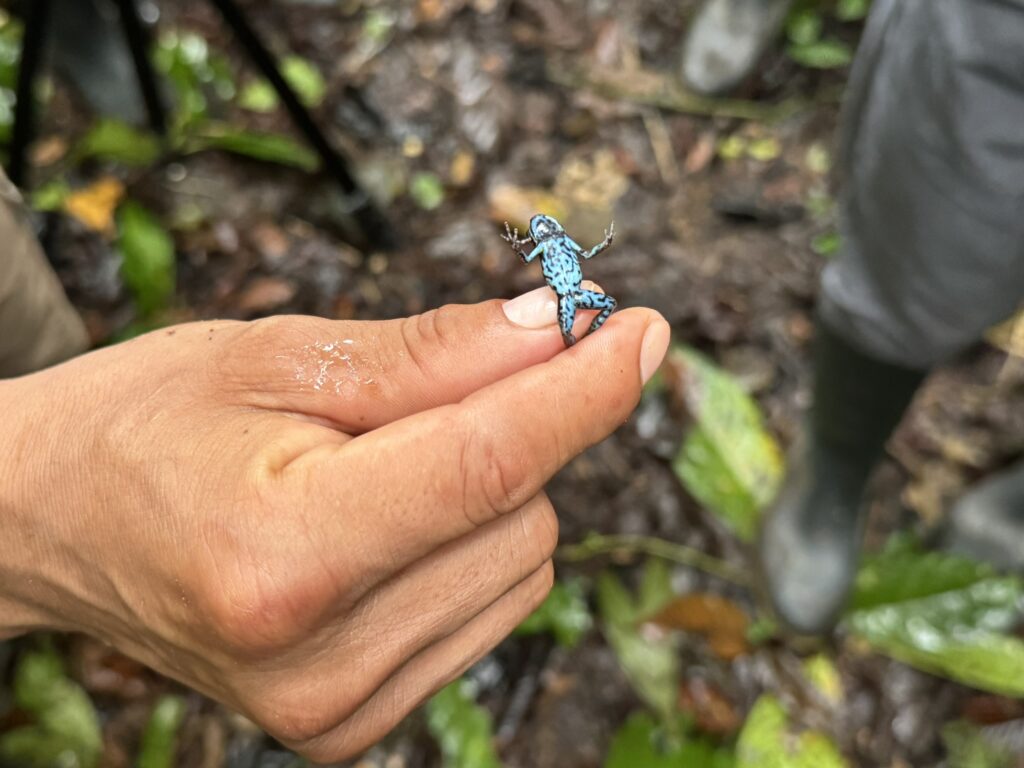
Unlike poison dart frogs in other areas of the Amazon, the species in Ecuador can be safely handled by those who know what they’re doing (aka the guides, not us).
We made it back just in time for lunch, which consisted of some truly spectacular barbeque:
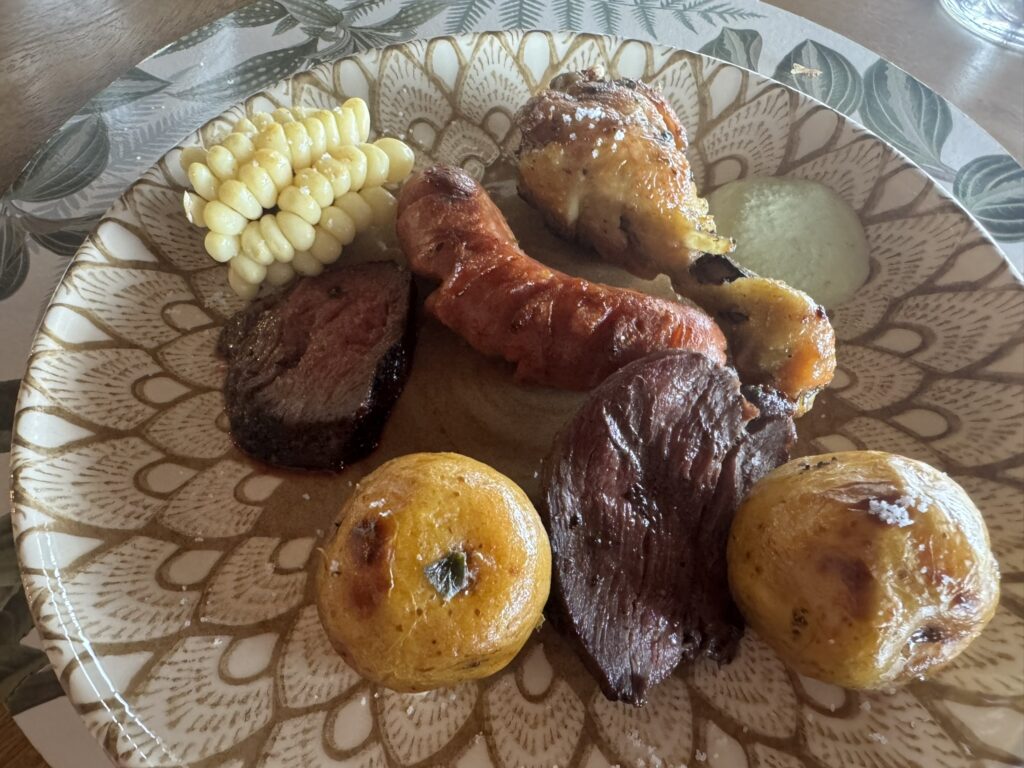
Not to mention chocolate brownies:
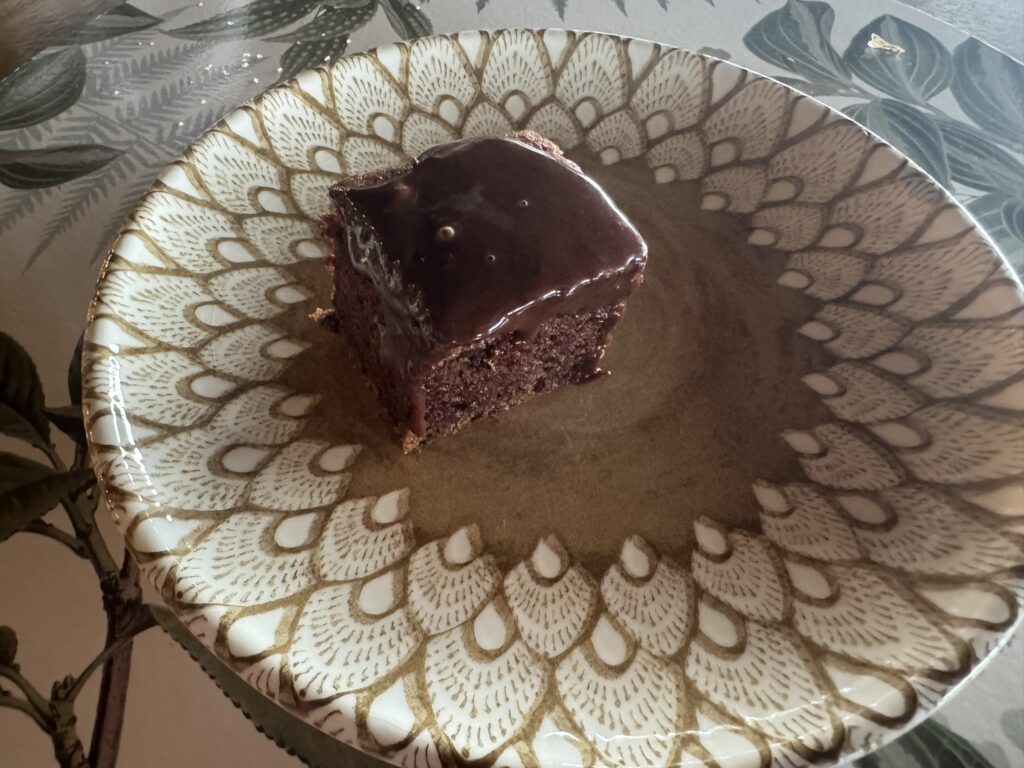
The kids were also invited to a build-your-own sundae bar at 3:30 pm. To no one’s surprise, they graciously accepted – particularly as it still left time for piranha fishing:
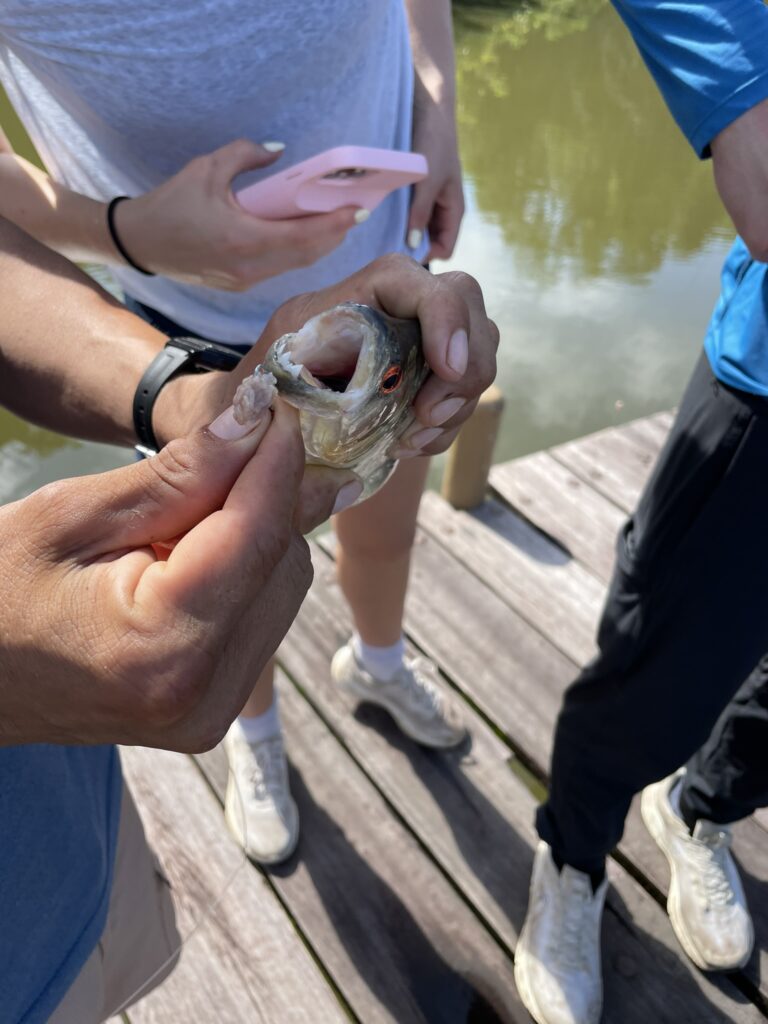
Sadly, neither of them managed to catch their own piranha. One of our fellow group members, however, managed to get a paiche on the line. For those unaware – a paiche can grow up to 4 metres and weigh over 440 pounds, and is often called the ‘piranha killer’. This promptly snapped her rod, giving her the ultimate ‘one who got away’ story.
(And kudos to LaSelva’s local guide, Henry, who promptly got into the lake to recover the broken rod so the hook wasn’t left to snare unwary fish/wildlife.)
It was then time for the build-your-own-sundae bar, which went as well as we could have hoped:
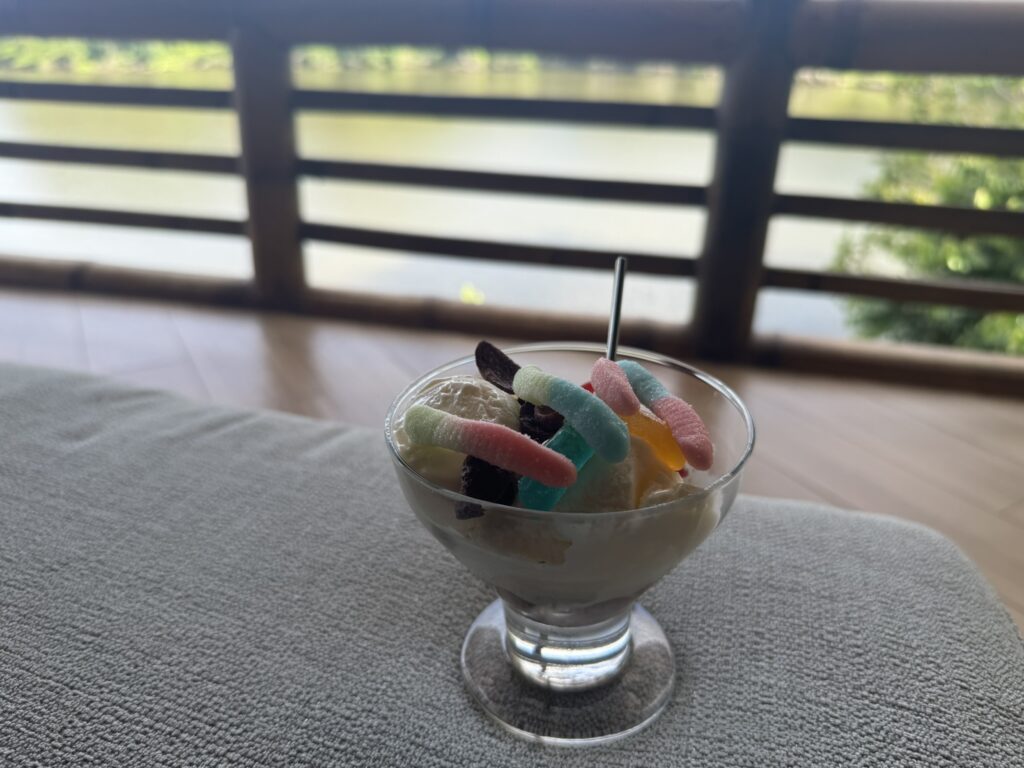
And then it was time to head back to our stateroom to get ready for our evening trip to the lagoon.
There was another brief downpour, during which I put on my rain gear – though I soon took it off, as very little of the rain was actually making its way to the forest floor.
(We’d initially though we’d need our full rain suits for some of the excursions, but Ana was quick to point out that this was overkill given the heat. We were better off with rain jackets and quick dry pants instead. LaSelva also offers ponchos for those without rain gear.)
The views and the wildlife were once more spectacular:
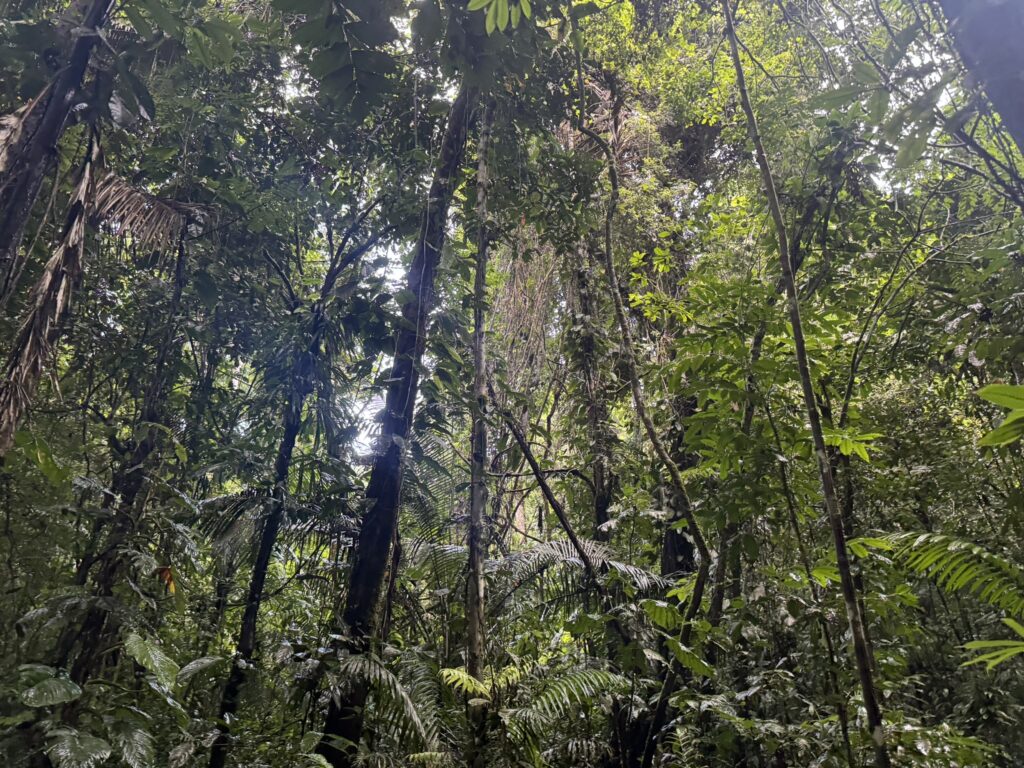
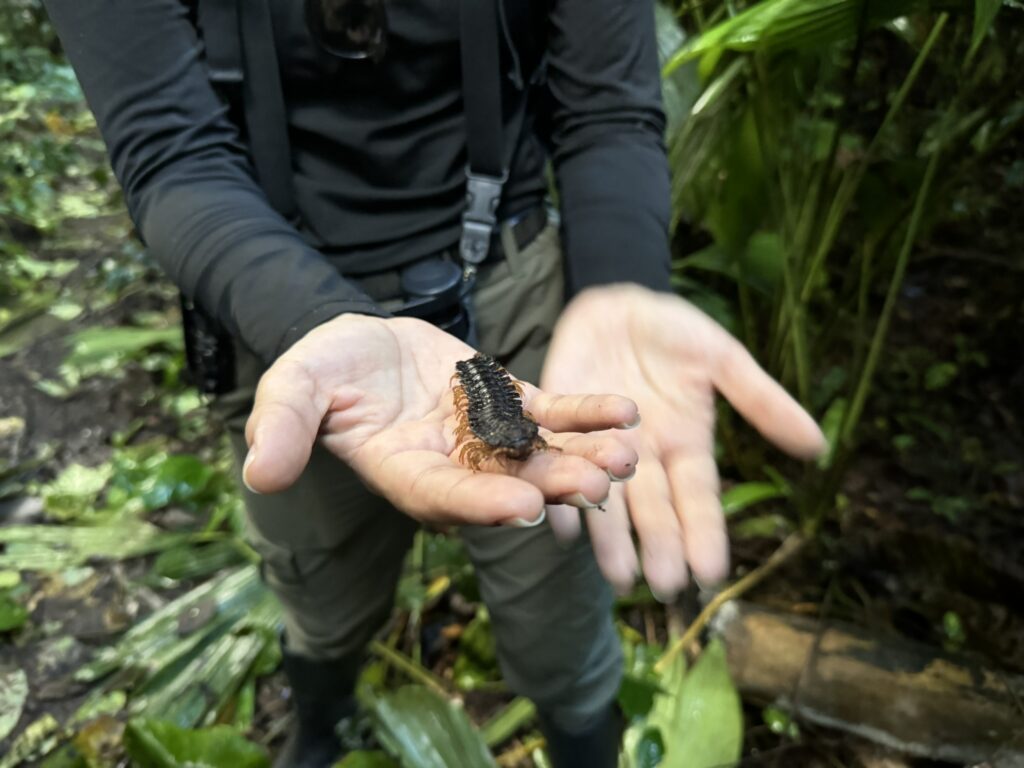
Among the four of us, only my daughter was brave enough to let the millipede climb over her hand:
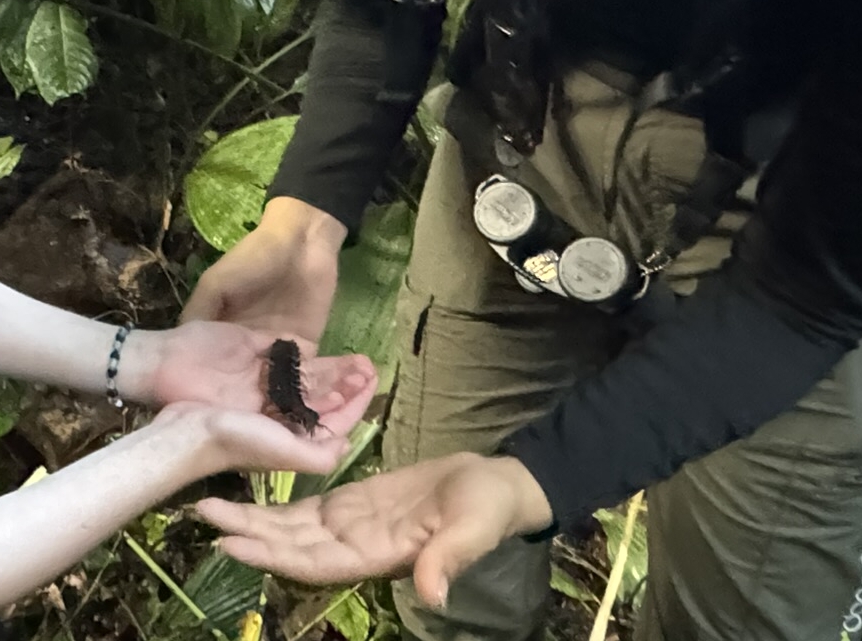
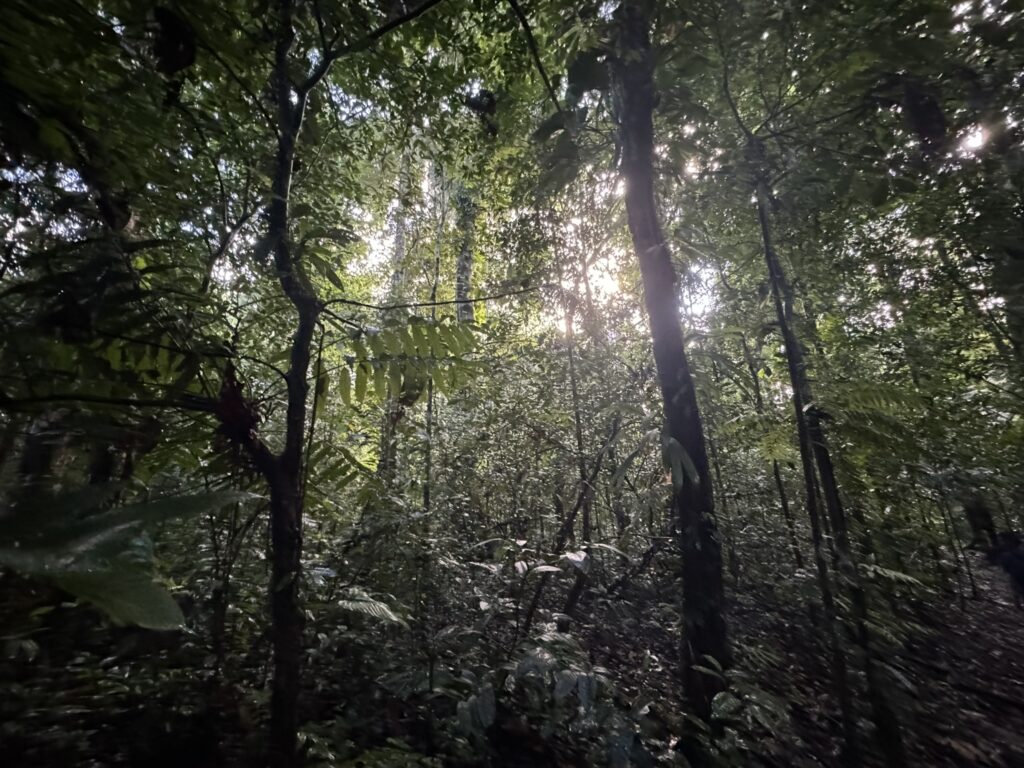
We soon arrived at the second lagoon. There was a brief delay while they went back to fetch a different canoe with extra seating, but that gave us some additional time to discuss the peculiarities of the leaf cutter ants – which use the cut leafs to farm the fungus that acts as the ants’ true sustenance. Also, the male ants apparently only live a few hours, and are viewed as a prime source of protein for humans and wildlife alike.
The larger canoe arrived soon thereafter, and it was time to get underway. Despite being within perhaps a few miles of the lake upon which LaSelva is built, this second lagoon was different enough to make the trip worthwhile:
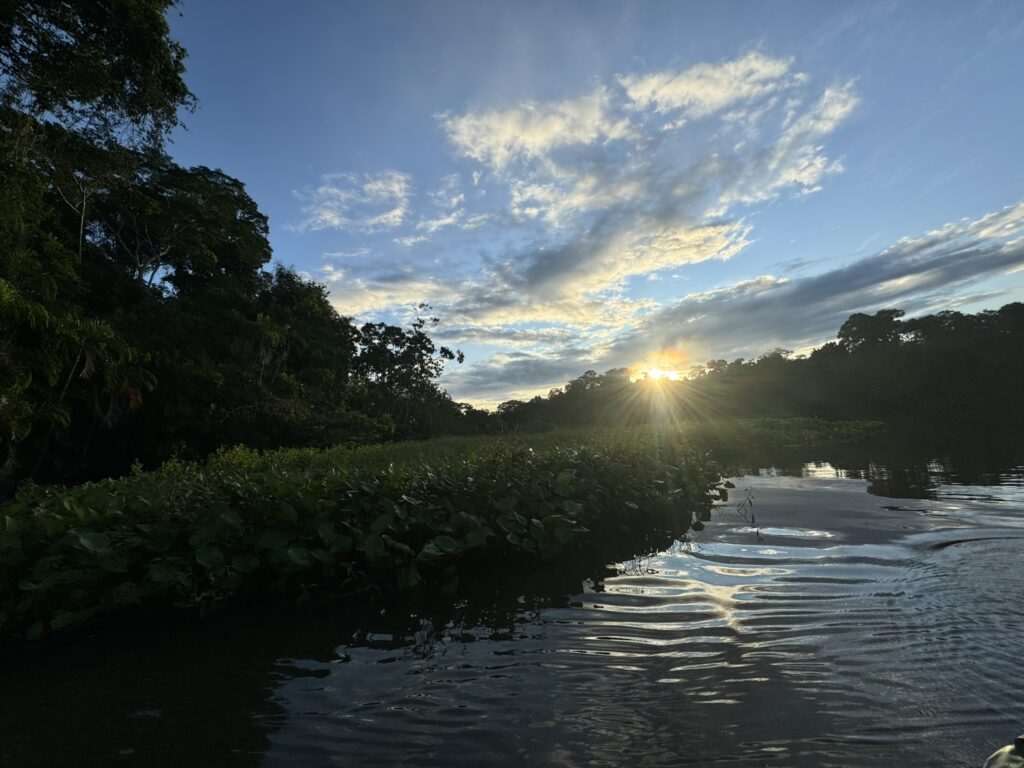
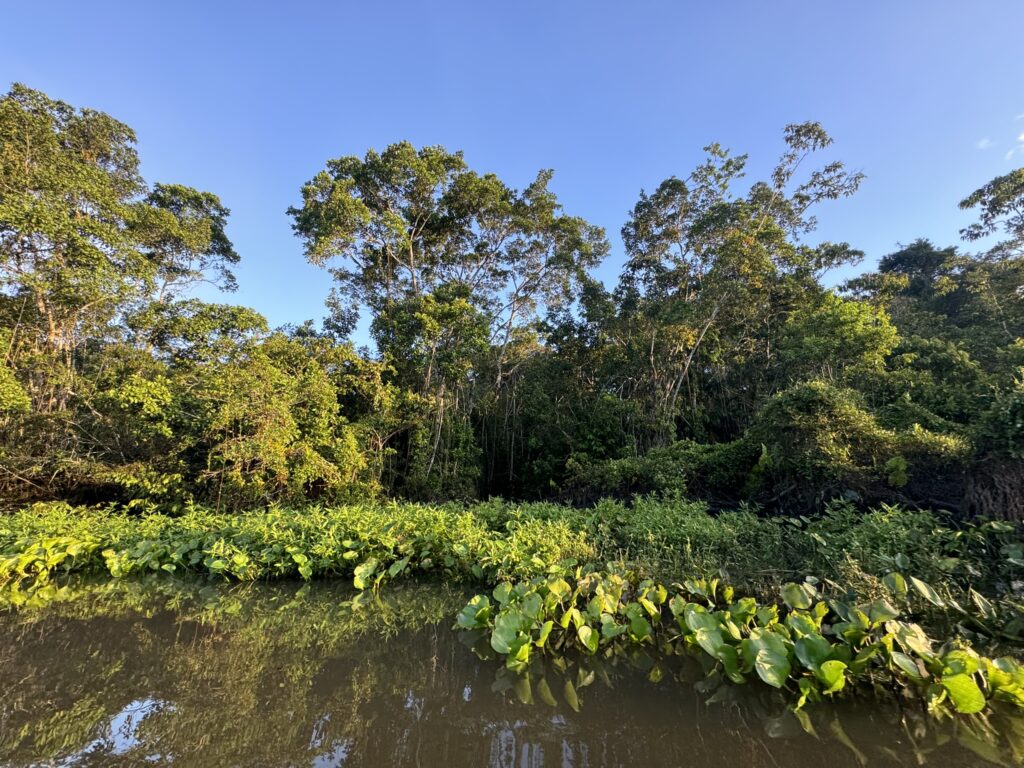
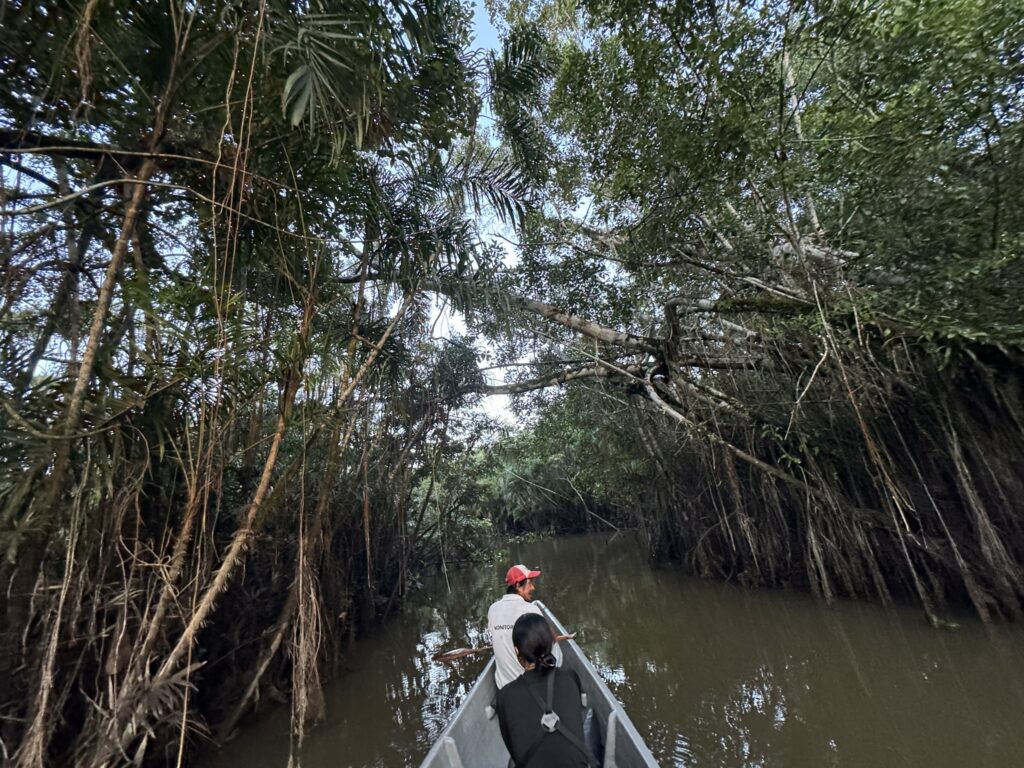
We saw a sloth and kingfisher – as well as the usual assortment of local birds – and enjoyed a spectacular view of golden hour.
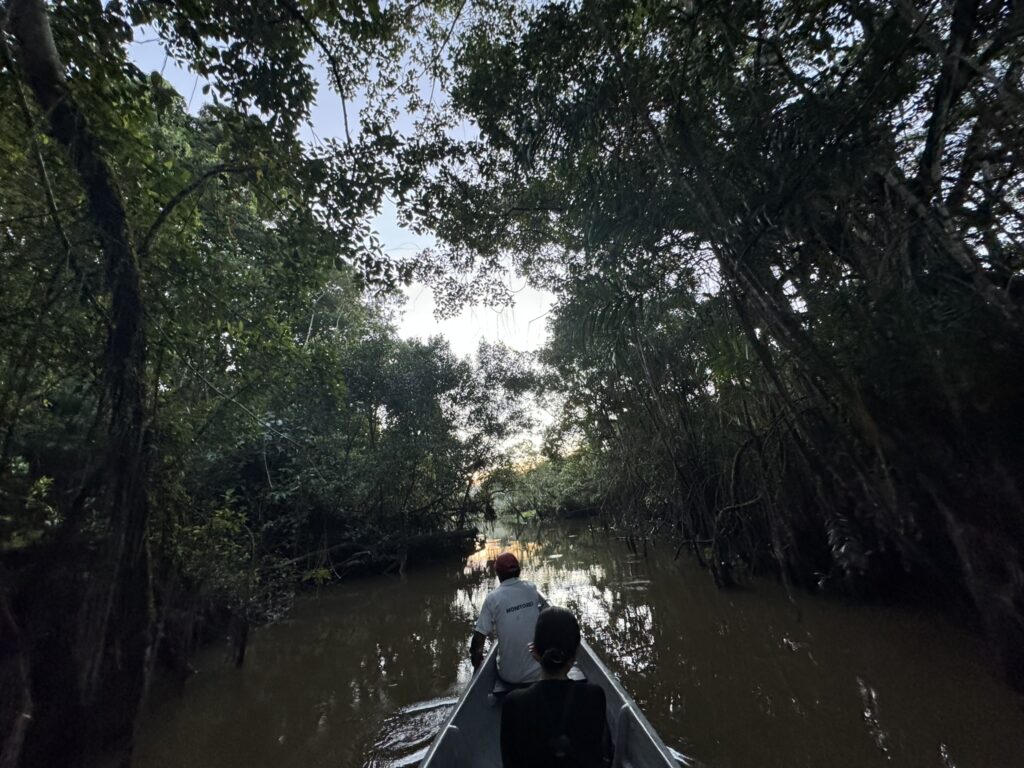
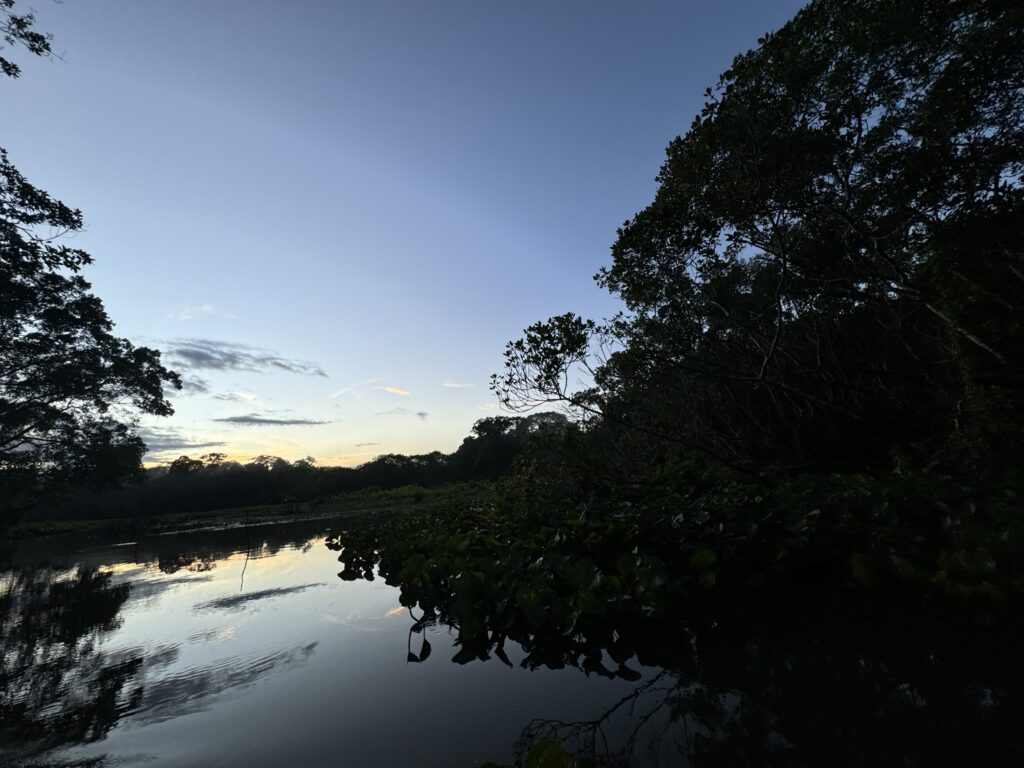
Darkness fell shortly after we returned to the dock, and we watched and listened as the jungle underwent a distinct shift in mood as the diurnal animals went to bed and the nocturnal animals emerged.
Not only did the soundtrack take on a dramatically different tone, we were suddenly able to spot a host of creatures that hid from daytime predators, including frogs, stick insects, spiders, snakes, and more.
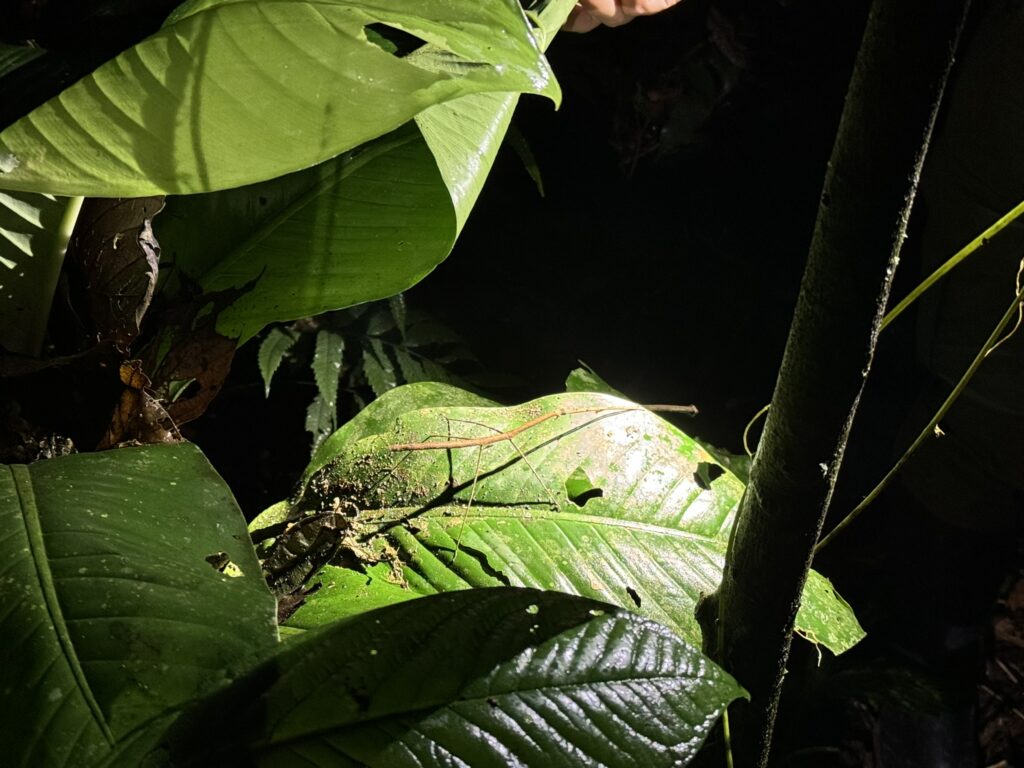
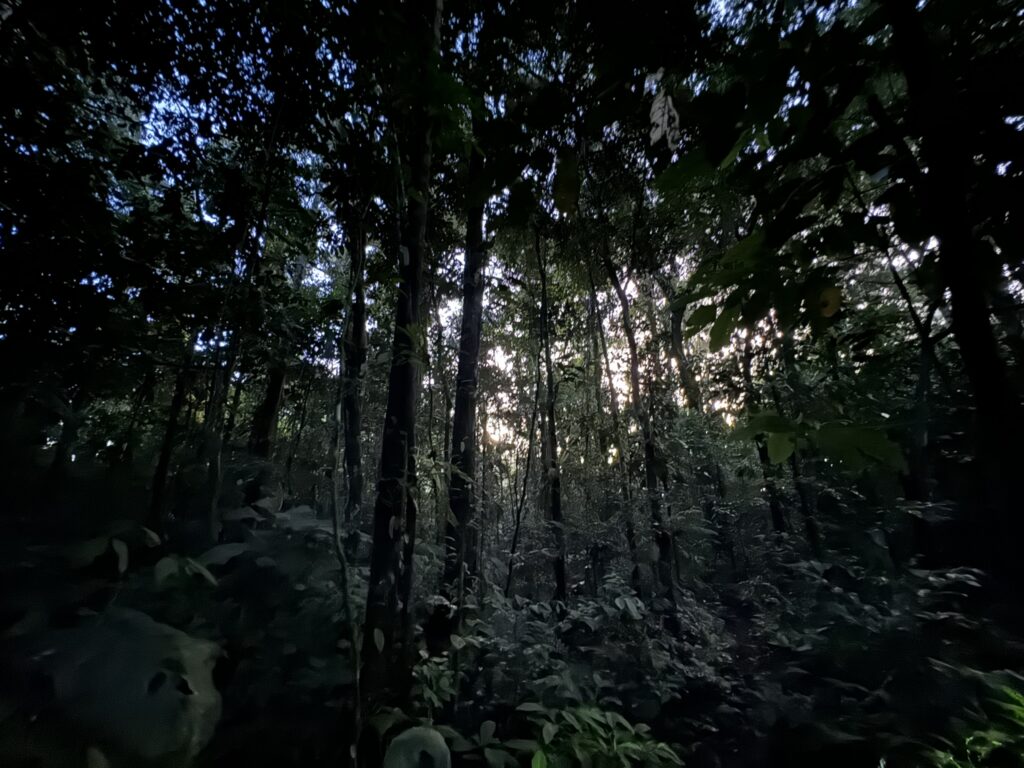
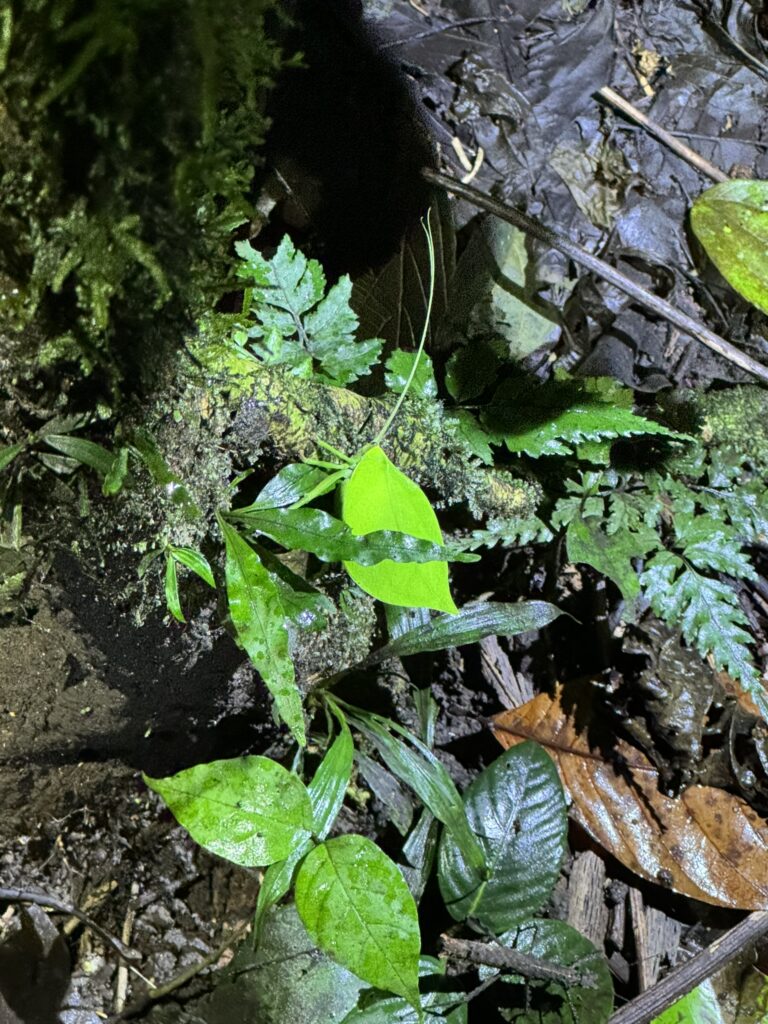
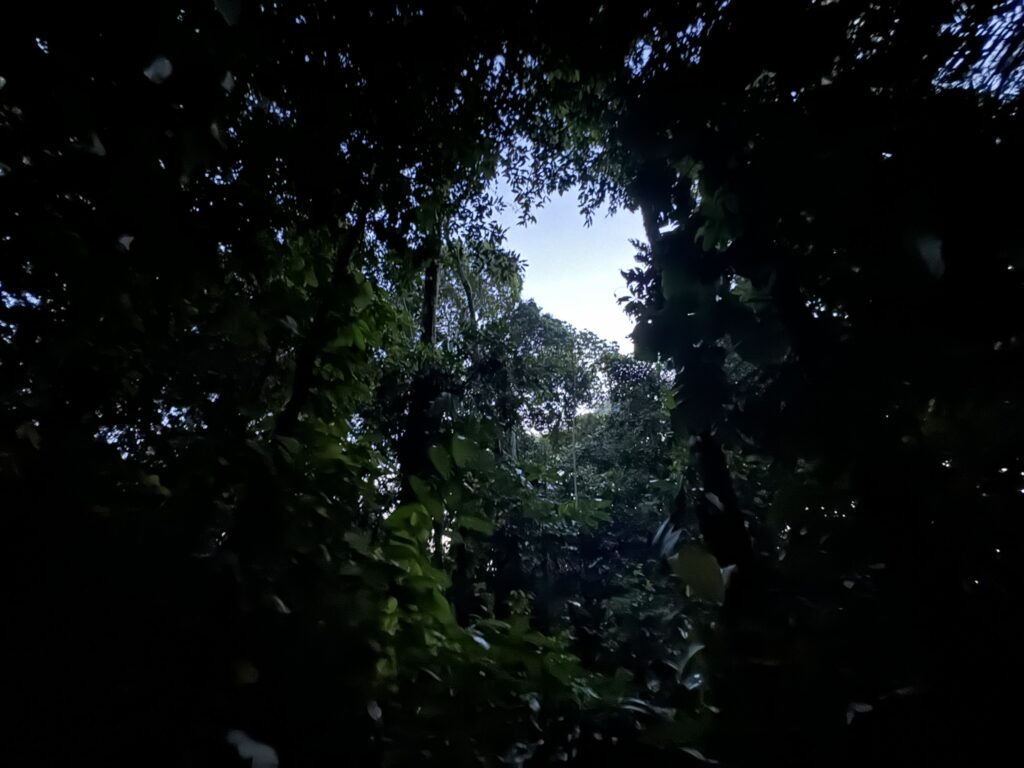
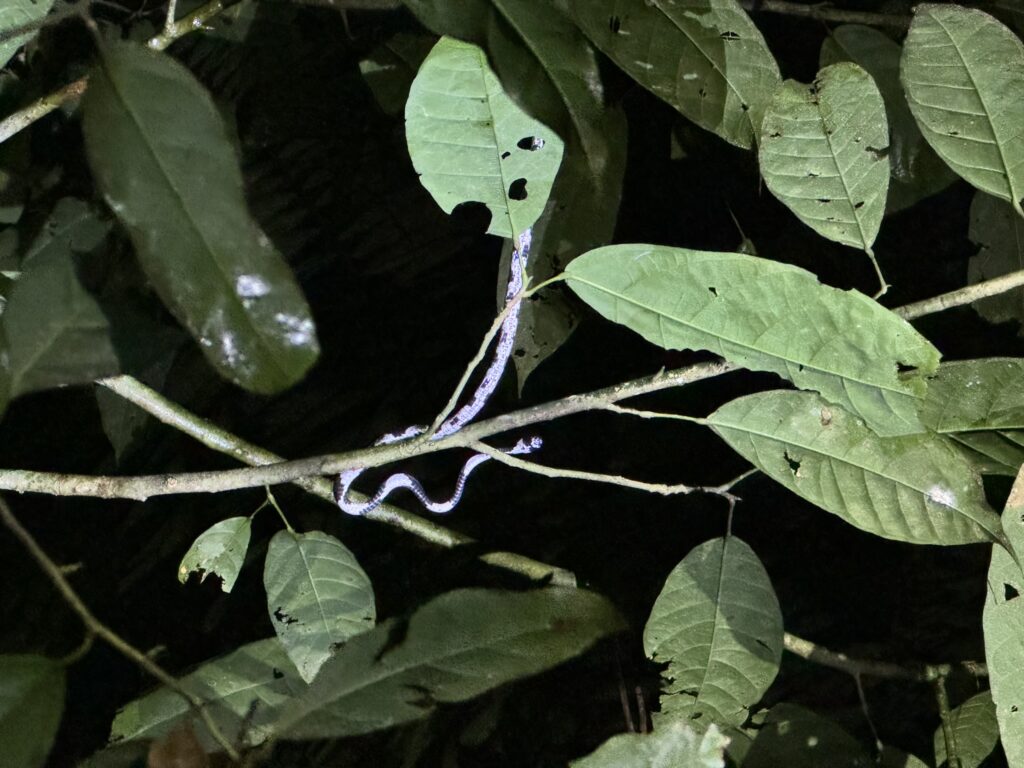
There was also a special spider known as the huntsman spider which would fluoresce under ultraviolet light:
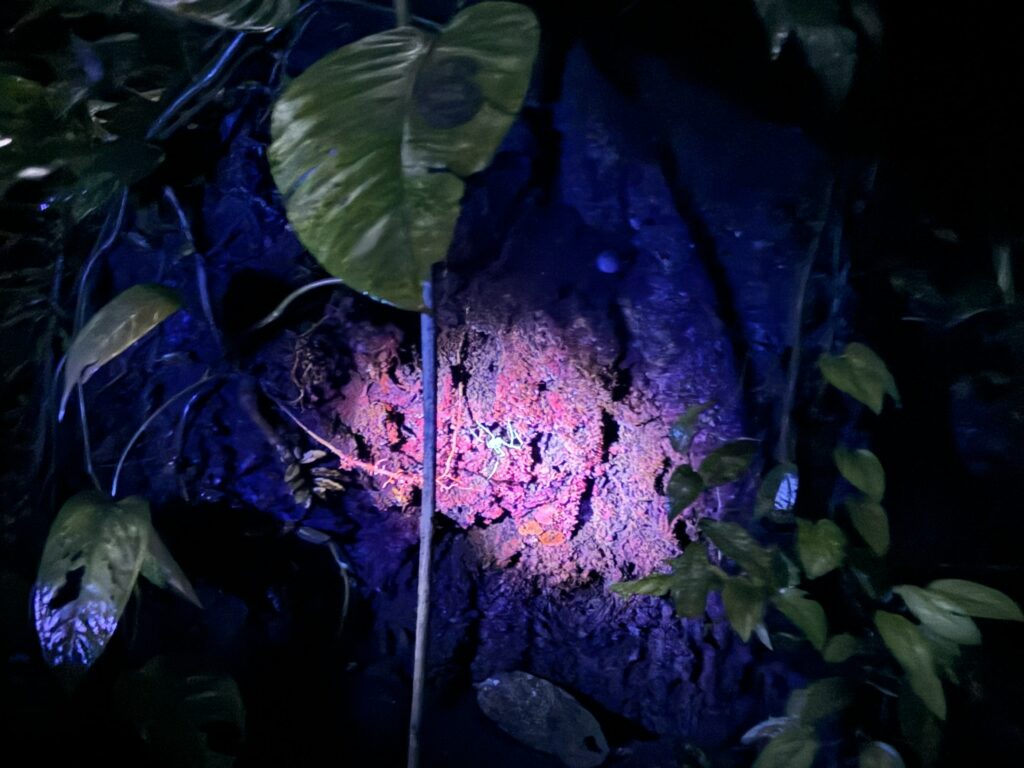
We even spotted a grey winged trumpeter, recently decapitated by what our local guide believed to be a bird of prey:
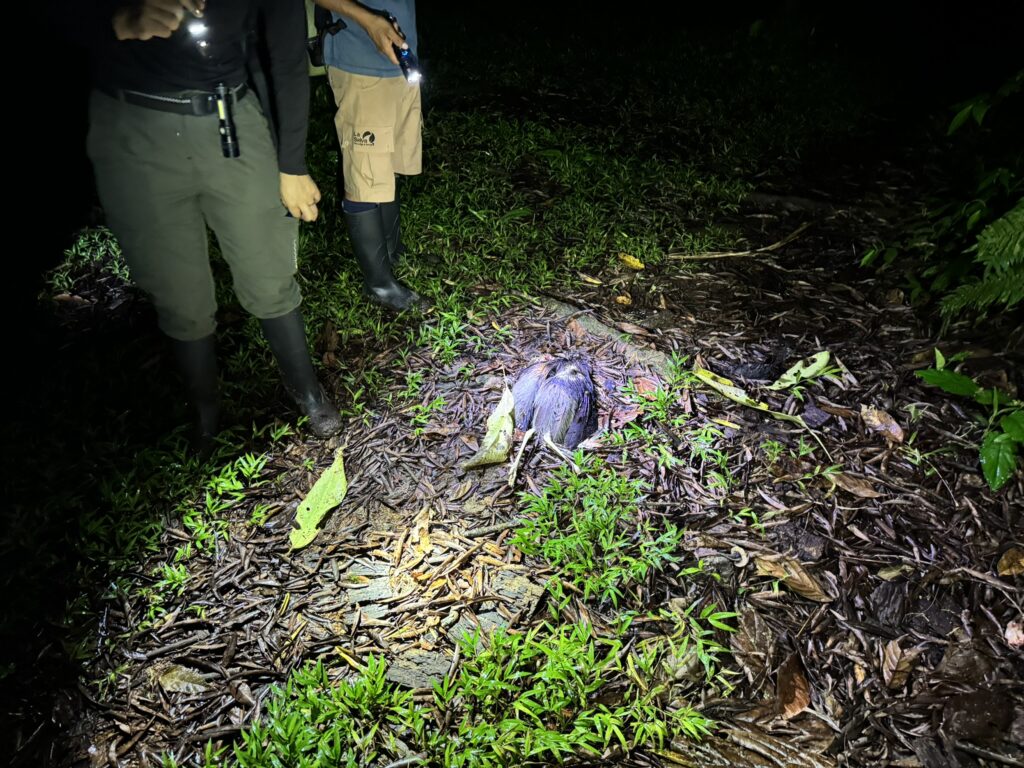
And a scorpion spider:
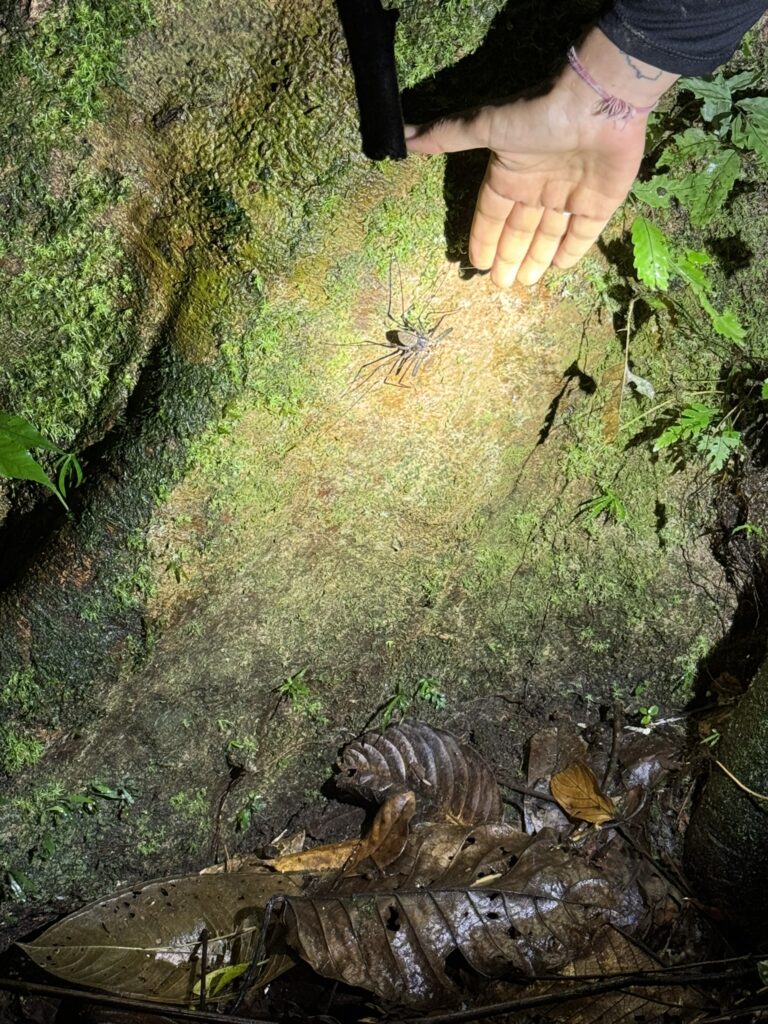
But the absolute highlight was the rainbow boa constrictor we spotted during the home stretch back to the hotel:
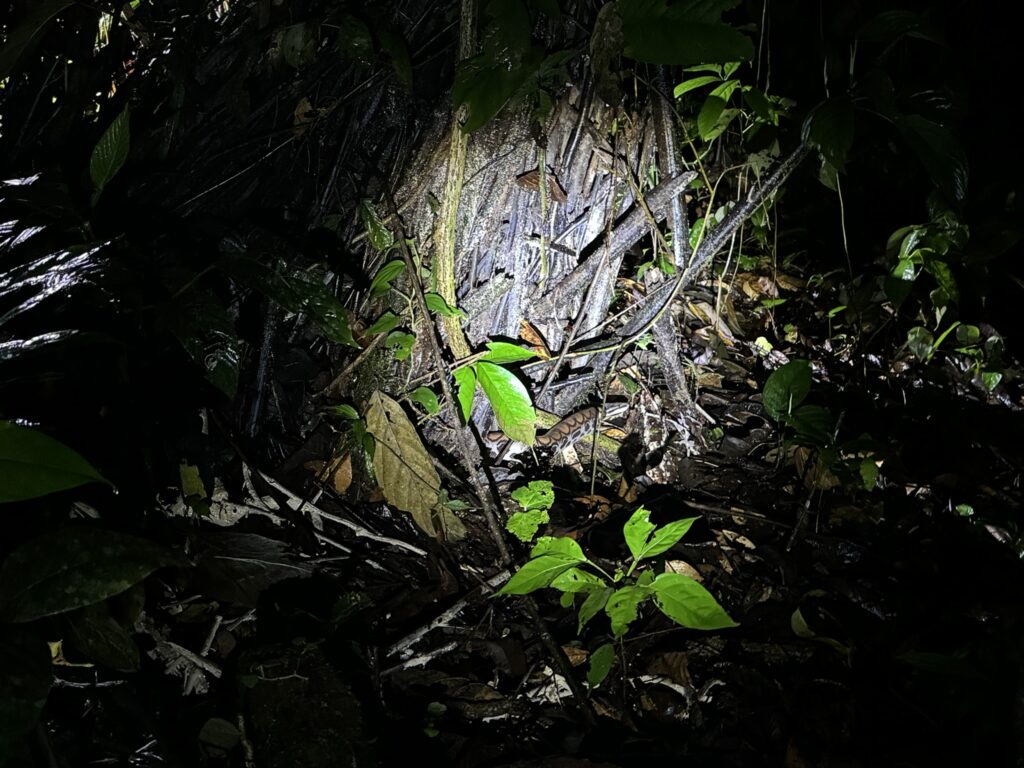
Hard to believe we’ve seen so much in only our first full day at the resort.
But there was little time to bask in our newfound glory – we needed to head back to our stateroom once more to get ready for dinner, which we pushed back by 15 minutes to ensure we had enough time to get our affairs in order.
It was another delicious meal consisting of an amuse bouche, and a Caesar salad with bacon and a slab of fried cheese (not pictured, sadly – but well enjoyed).
Pasta for the kids:
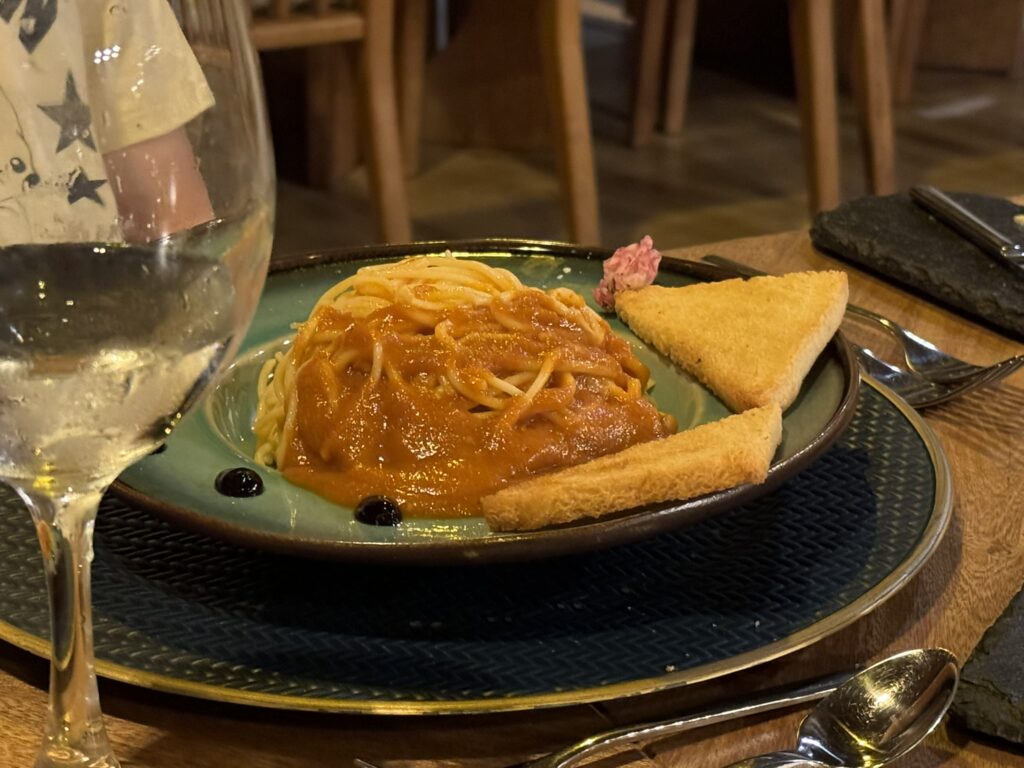
And paiche for the adults:
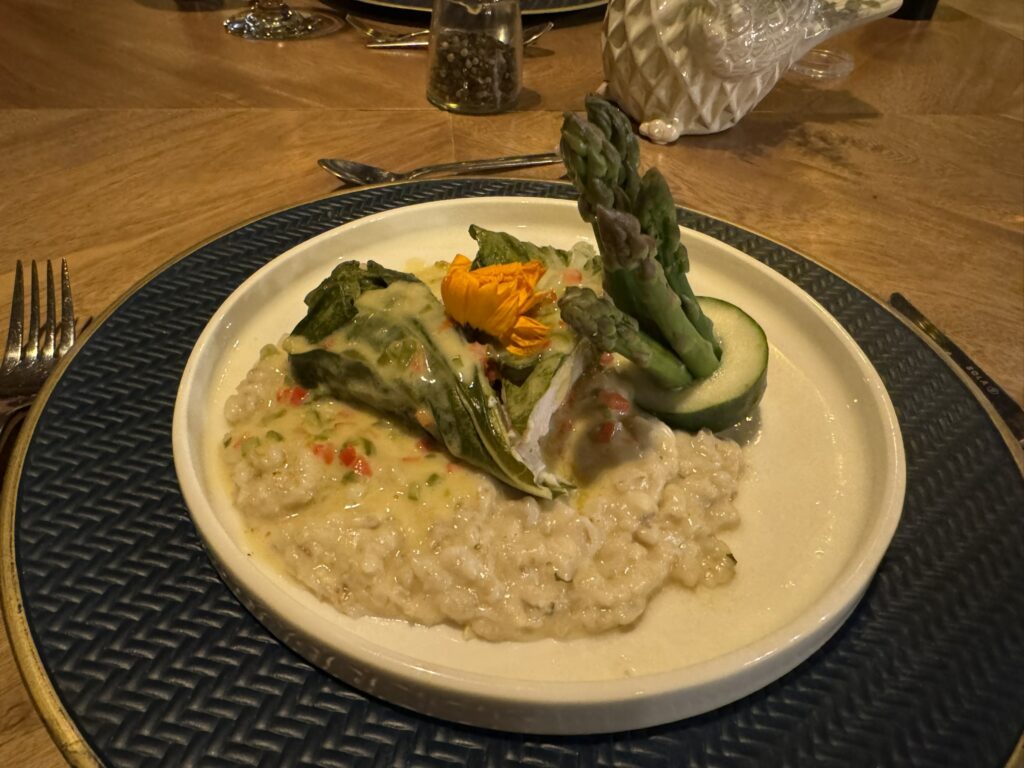
Finished off with Catalan cream for dessert:
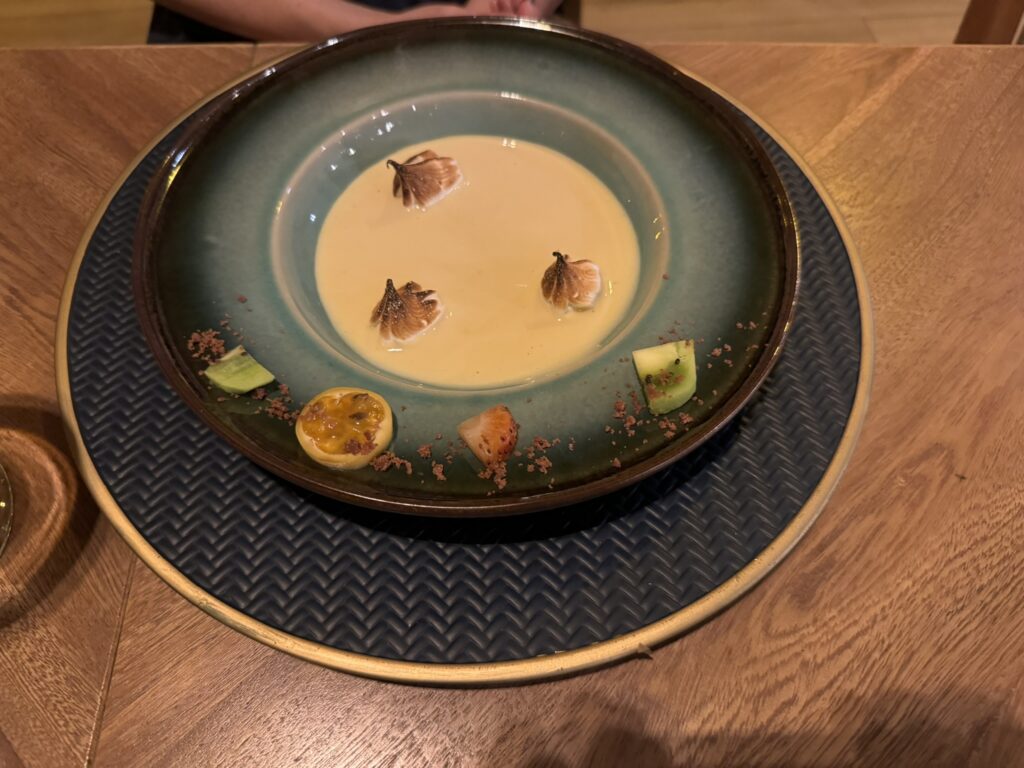
A fantastic meal to cap off yet another fantastic day.
But it was time to head to bed, lest tomorrow’s 5:30 am knock catch us unrested and unprepared.
Continue reading Ecuador and the Galapagos – Day 5.
